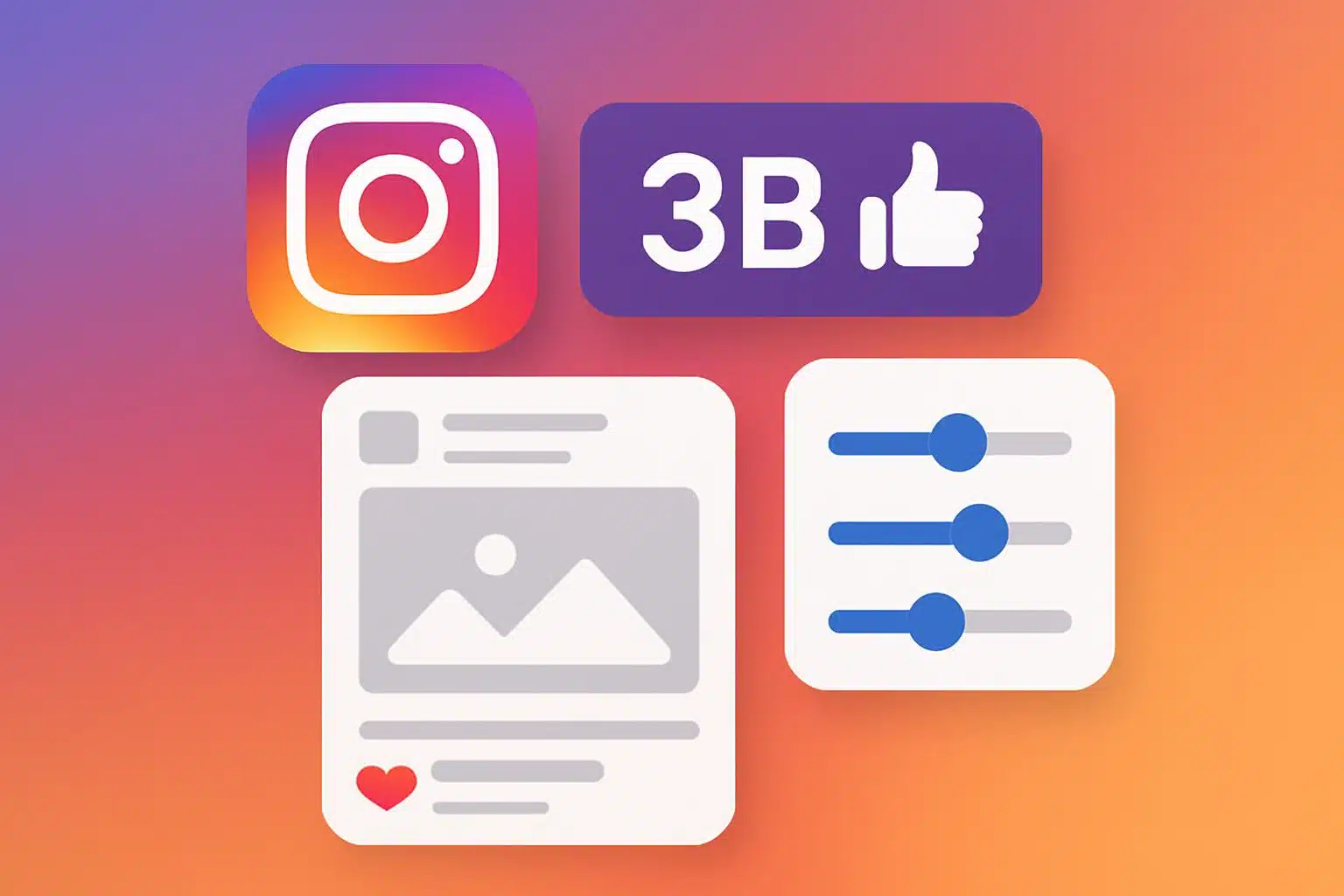Meta's Instagram just crossed a massive milestone - 3 billion monthly active users, tripling its size since 2018. But the real story isn't just the numbers. As CEO Mark Zuckerberg and Instagram Head Adam Mosseri announced the figure, they're also rolling out features that let users actually control what their algorithm shows them - a direct response to growing user frustration with AI-driven feeds.
A platform bigger than any before, operating globally
At 3 billion, Instagram is among the very few consumer apps running at truly global scale. It doubled its base two years later, to 2 billion in April 2017, then took about seven more years after that to triple from a base of 1 billion announced in 2018, showcasing how deeply the app has gained traction across culture, commerce and communication globally.
Meta has long attributed engagement increases to AI recommendation systems and Reels; on previous earnings calls, executives have said time spent on Instagram increased materially after it leaned into recommended content. Third-party firms like data.ai and Sensor Tower have consistently observed Instagram among the top downloads worldwide, as well as consumer spend — reinforcing how it continues to attract younger users and creators.

Topic-level relevance tuning for Reels and beyond
Instagram will test a feature that allows users to switch on broad topics that are used to refine what the algorithm shows. If the app assumes you like college football, film photography, or chess, you can confirm, mute or remove those preferences so that fewer within-topic posts will surface. It’s another layer on top of existing controls such as “Not Interested,” “Snooze suggested posts” or even the ability to see the Following and Favorites feeds.
The initial tests are in Reels, where algorithmic discovery is strongest. If it results in greater engagement and happiness, Instagram will roll out topic tuning to other parts of the product. The company is also testing a navigation change that would put your DMs front and center by adding a direct link to them in the bottom bar, which reflects how much sharing now occurs in private compared to public posts.
This approach dovetails with a larger move away from the design of platforms that force users to micromanage every post, in favor of giving them coarse, meaningful controls. It also reflects the regulatory requirements in places like the EU, where the Digital Services Act promotes greater transparency and alternative recommendation possibilities.
Why DMs and Reels keep winning with users and creators
Instagram’s feed has undergone a transformation, from a friends-and-photos battlefield into an all-out war for your attention where AI recommendations are based on what you didn’t want to see. That model does supercharge time together, but it can also feel impersonal. DMs bring the intimacy back: Many of us will share the very best Reels in private threads, where conversation and community start happening. Betting on this behavior continuing to expand is the prospect of message prominence in the nav.
For creators and brands, topic controls could be a double-edged sword. On the one hand, clearer signals could help their content reach genuinely interested audiences. On the other, users who mute broad topics may further concentrate and increase reach volatility. Look for an increased focus on niche consistency, group posts, broadcast channels and call-to-action triggers that allow users to save and/or share or follow based on specific themes.

Competitive and regulatory pressure intensifies on Instagram
Instagram’s growth is happening as it’s being heavily scrutinized and at times penalized. TikTok continues to lead the way in short-form video and discovery. In the United States, the Federal Trade Commission’s antitrust case against Meta — focused on previous acquisitions and competitive conduct — has exposed internal communications and reopened a debate over how Meta divvies up innovation among its apps.
There are also differences in how age groups behave on platforms. Instagram ranks among the top destinations for U.S. teens, according to research from the Pew Research Center, while Facebook’s use by teens is falling compared with other platforms. Within Meta, executives have privately discussed the cultural cachet of Instagram compared with Facebook — and the strategic tension that emerges from that. Improved feed controls are a way of cutting user churn, while maintaining recommendation-driven growth.
What to watch next as Instagram expands topic controls
Key signals will include how many people actively curate their topics, whether satisfaction scores increase and if Reels watch time remains level as users silence entire themes they used to watch. The navigation change, also, will be closely watched: prioritizing DMs may increase sharing but could slightly raise friction for posting in a trade-off that creators will notice.
If the tests are successful, Instagram will likely roll topic tuning out to Explore and the main feed, introduce more granular categories of content and perhaps provide region-specific options tuned to meet local norms and regulatory guidance. With 3 billion users, even slight changes in control can reconfigure the experience for hundreds of millions — transform a dumb algorithm into something that feels at least more personal, and thus more predictable; something worth returning to every day.

Final Words.
Instagram's 3 billion user milestone isn't just about scale - it's about control. As Meta gives users more power over their algorithmic feeds, it's acknowledging that pure AI-driven growth has limits. The company that built its recent success on showing people content they didn't ask for is now betting that letting users customize that experience will drive the next phase of growth. With regulatory pressure mounting and user satisfaction becoming crucial for retention, this shift toward user agency might be exactly what Instagram needs to keep its momentum going.







